Fitness trackers have come a long way from the simple bands that tracked steps and little else. Modern trackers can monitor everything from your heart health to how well you’ve recovered from a hard bout of training. Even flagship smartwatches, which used to be lackluster trackers, have become pretty adept workout companions. Whatever your fitness goals are, there’s probably a fitness tracker that can help you achieve them.
Technology
The 10 best fitness trackers in 2024
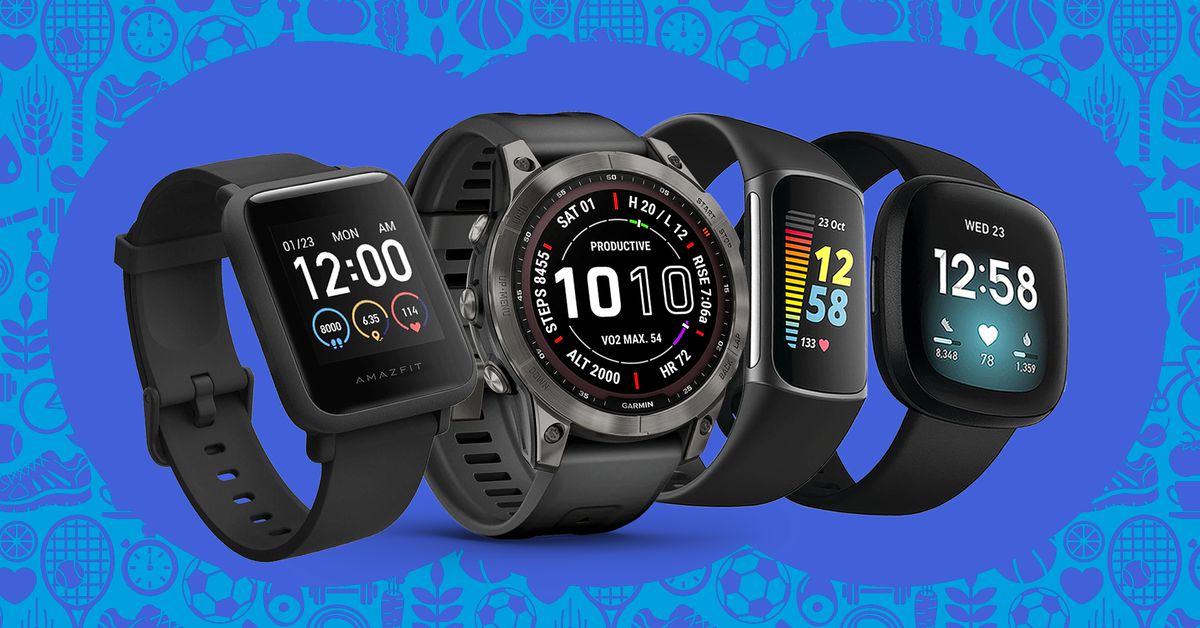
Compared to some other gadgets, wearables are incredibly personal, which means there are a few extra considerations you’ll have to take into account before reaching for your wallet. It makes it hard to say that any one fitness tracker is the best for everyone. Thankfully, the best thing about fitness trackers in 2024 is that there’s enough variety to fit into every kind of lifestyle.
Right now, we’re heading into the holiday shopping season. A little patience goes a long way this time of year. Retailers and companies alike will be trying to get rid of old stock, meaning discounts galore ahead of Black Friday. If you don’t need the latest and greatest, it’s a good time to snag last year’s models in nicer materials.
Best fitness tracker overall
Size: 46mm w/ 22mm straps / Weight: 34g / Battery life: Up to 14 days / Display type: OLED touchscreen / GPS: Dual-frequency and six GNSS systems / Connectivity: Bluetooth, Wi-Fi / Water resistance: 5ATM / Music storage: 2.3GB
The Amazfit GTR 4 punches way above its weight. It includes a whole array of features you’d expect to see on much pricier wearables, like a bright OLED screen, blood oxygen monitoring, sleep stage tracking, stress tracking, Amazon Alexa compatibility, and an offline digital assistant. It’s also got a native camera remote and a handy Pomodoro timer built in. And for outdoor fitness enthusiasts, the GTR 4 also has multiband GPS for more accurate GPS tracking in challenging environments. You can even import GPX routes from sites like Strava and Komoot. The GTR 4 takes a more holistic approach to health, trading in steps for PAI points to gauge whether you’re getting the recommended 150 minutes of moderate activity per week.
For smart features, the GTR 4 has all the basics: push notifications, quick text replies on Android, alarms, timers, and the ability to make and take calls over Bluetooth. The only thing the GTR 4 is really missing is contactless payments, but it more than makes up for it, given the expansive feature set and battery life. It lasts about 10–14 days on a single charge with normal use and about a week with heavy usage. It may not have the brand recognition of a Fitbit, but since Google nerfed both the Versa 4 and Sense 2 last year, you might want to overlook that. Plus, the GTR 4 doesn’t have thick bezels like either of those watches. Watchfaces on the OLED display are crisp, and animations are smooth. When you consider that Amazfit watches are often on sale, it’s a no-brainer.
Best fitness watch for casual users
Sizes: 40mm w/20mm straps / Weight: 38g / Battery life: Up to 11 days / Display type: OLED touchscreen / GPS: All-systems GNSS / Connectivity: Bluetooth, Ant Plus / Water resistance: 5ATM / Music storage: 4GB (for Music Edition)
The $250 Garmin Venu Sq 2 is the watch I recommend for anyone looking to replace their aging Fitbit Versa 2, 3, or 4. It’s got a similar look and vibe, with a much nicer OLED display and longer battery life.
Garmin is known for its comprehensive fitness tracking, and that’s not an exception here. Of course, you get the basics, like steps and calories burned, but you get a whole lot more, too. There’s built-in GPS for tracking walks, runs, and bike rides, as well as plenty of other sports profiles like yoga and strength training. For smart features, you get push notifications, timers, contactless payments, and a bunch of safety features like Garmin’s Incident Detection, which is its take on fall detection. (You will need to carry your phone with you, however, as this doesn’t have LTE.)
If you want the option of onboard music, you can shell out $50 extra for the Music Edition, which comes with enough storage for about 500 songs. I wouldn’t recommend it, however, as you’ll most likely have your phone on you since this isn’t a true standalone watch.
What I like most about this watch, however, is it’s one that you can grow with. On top of recovery metrics and sleep tracking, it also has Garmin Coach — a built-in, free training program for beginner and intermediate-level runners hoping to tackle a 5K, 10K, or half marathon. For health tracking, you can monitor heart rate, blood oxygen, intensity minutes (how many minutes of moderate exercise you get per week), stress, hydration, respiratory rate, and menstrual cycles. And the best part is Garmin doesn’t lock any of this behind a paywall.
One note: there is a Venu 3, which adds a newer heart rate sensor and nap detection. I liked it quite a bit, and it ticks off a lot of the right boxes — except for price. It’s $450, which puts it outside what I’d consider ideal for casual users. The other option is Garmin’s Forerunner 165 — it’s a $249 budget training watch that’s quite similar to the Venu Sq 2 feature-wise, albeit with a sportier vibe. Basically, go with what you find on sale. I firmly believe older models are still a good choice if all you want is the fitness-tracking basics. This is especially true since newer software updates often make their way to older Garmins. Garmin users also tend to hang onto their device for a good while. Strava’s 2023 year-end survey found that the most popular smartwatch among its users was an eight-year-old Garmin!
Best for serious outdoor athletes
Sizes: 7S Pro: 42mm w/20mm straps, 7: 47mm w/22mm straps, 7X: 51mm w/26mm straps / Weight: 7S Pro: 63g (Solar), 58g or 65g (Sapphire Solar, titanium or stainless steel) 7: 79g (Solar), 73g (Sapphire Solar) 7X: 96g (Solar), 89g (Sapphire Solar) / Battery life: 7S: up to 11 days, 14 w/ Solar, 7: up to 18 days, 22 days w/ solar, 7X: up to 28 days, 37 w/solar / Display type: MIP touchscreen / GPS: All-systems GNSS and dual-frequency GPS / Connectivity: Bluetooth, Ant Plus, Wi-Fi / Water resistance: 10ATM / Music storage: Up to 32GB
Garmin’s flagship Fenix 7 series is no joke, and the Fenix 7 Pro lineup takes it up a notch. It’s got built-in multiband GPS, solar charging on all models, the option of touchscreen or button navigation, topographical maps, and oodles upon oodles of data. Plus, every Fenix 7 Pro model has a hands-free LED flashlight, an upgraded heart rate sensor, and an improved memory-in-pixel display that’s slightly easier to read in low lighting.
Garmin wearables are also known for providing extensive, in-depth metrics, and the Fenix 7 Pro lineup is no exception. You get excellent recovery metrics, as well as helpful training guides and coaching programs. The best part is Garmin doesn’t charge extra for those features. That’s good news, as these are expensive watches.
I appreciate how quickly these Fenix 7 watches are able to pick up a GPS signal. That’s a must if you’re training in the dead of winter. These watches can also take a beating. All models are built to military-grade standards and feature up to 10 ATM of water resistance. That means they’re more than capable of a dunk in the ocean.
Although the screen is brighter, MIP displays still aren’t my absolute favorite — the OLED on the Garmin Epix 2 and the Epix Pro are a lot easier on the eyes. It’s admittedly tough to pick between the Fenix 7, Fenix 7 Pro, Epix 2, and Epix Pro lineups — especially now that the Epix Pro also has great battery life, the LED flashlight, and now comes in multiple sizes. What it boils down to is whether you prioritize a brighter display, longer battery life, or price.
Personally, I prefer the Epix Pro for better readability, but the Fenix 7 Pro is the better choice if this is your first introduction to Garmin’s platform. You’ll get better battery life, the same LED flashlight, all the same training features, and a lower starting price. (You can also check out our Garmin buying guide if you’d like even more alternatives.)
Technically, there’s a new Fenix 8 series on the block. That said, I still think the standard Fenix 7 lineup is a good choice, especially given how expensive the new Fenix 8 is. We’re still reviewing it, but the main updates over the Fenix 7 lineup are “smarter” features like a voice assistant. If that’s not a concern, an older model might be friendlier to your budget — especially as retailers tend to discount older stock around the holiday season.
Best non-wrist tracker
Sizes: 8 proprietary sizes, 6-13, sizing kit needed / Weight: 4–6g (depends on size) / Battery life: Up to 7 days / Display type: None / GPS: None / Connectivity: Bluetooth / Water resistance: Up to 328 feet / Music storage: None
The vast majority of fitness trackers are worn on the wrist, but the $299 Oura Ring isn’t. The smart ring is a good option for people who are looking for something a little more discreet. It’s also less distracting than some other wrist-based options, as it lacks a screen and doesn’t mirror push notifications from your phone.
While smaller than your average wearable, the Oura Ring still tracks a ton of metrics, including heart rate variability and body temperature. The third iteration of the device also introduces SpO2 sensors, as well as all-day heart rate monitoring and period predictions. Since launching, the Oura Ring has also added activity tracking, blood oxygen levels, chronotypes to help visualize your circadian rhythms, and a new social feature called Circles. It’s also begun rolling out a whole new sleep stages algorithm that it claims is more accurate than before. If you’re looking for some stress relief, the Oura Ring also lets you track guided meditation sessions.
The Oura Ring tracks typical metrics — such as steps and calories burned — but its main focus is sleep and recovery. Each day, you’re given three sets of scores for your readiness, sleep, and activity. It’s a simple, holistic look at your overall wellness and an ideal pick if you want a more hands-off experience with your data.
If you’ve got a Samsung Galaxy Watch, you may want to consider the $399.99 Galaxy Ring. It’s a bit more expensive than the base Oura Ring, but it doesn’t come with a subscription, and you get much better battery life when used with the Galaxy Watch. The hardware is also excellent, especially the charging case. That said, this is only an option for Android users, and even then, you don’t really unlock its full potential unless you’ve got other Samsung gear.
You might not want to buy at this exact moment, however. Android Authority spotted some certification filings for a potential Gen 4 model earlier this summer. Companies usually do this when a new launch is imminent. If something new is in the works, it’s likely Oura will launch it before Black Friday. So, it’s a good time to hold out if you can wait.
Best fitness band
Size: 42mm x 24mm x 12.2mm with 16mm straps / Weight: 28g / Battery life: Up to 18 days / Display type: OLED / GPS: Tethered / Connectivity: Bluetooth / Water resistance: 5ATM / Music storage: None
It’s truly hard to beat the Amazfit Band 7’s $49.99 price — doubly so since you can often find it on sale for even less. Wearing the Band 7 feels like a throwback to 2014, which is great if all you’re looking for is a simple and casual tracker that won’t break the bank.
No one is going to compliment you on the Band 7’s design, but it’s got a handful of cute watchfaces that make good use of its OLED touchscreen. And despite having an OLED display, you’ll still get roughly 14 days of battery life on a single charge. It’s also incredibly lightweight, making it a good option for sleep tracking as well.
You also get an absurd number of features for the price. That includes Amazon Alexa, continuous heart rate monitoring, blood oxygen monitoring, stress tracking, advanced sleep tracking, training metrics like VO2 max and load, abnormal heart rate alerts, menstrual tracking, push notifications, find my phone, a camera remote, and even a Pomodoro timer. You’re sacrificing contactless payments and will have to settle for tethered GPS, but this is a fair tradeoff considering everything else you’re getting. It’s not the best option for hardcore fitness tracking, but this is a great option if all you’re looking to do is casually track activity and your steps.
Amazfit’s been making surprisingly good budget trackers for a while. That said, if you’re a little wary of a lesser-known brand, the $159.95 Fitbit Charge 6 is a decent alternative. It’s pricier, but you get a lot of what Amazfit is missing. That includes Google services like YouTube Music, Google Wallet, and Google Maps. Plus, it has built-in GPS and the ability to broadcast your heart rate with some Bluetooth-compatible gym equipment.
Most stylish fitness watch
Sizes: 37mm with 18mm straps / Weight: 45g / Battery life: Up to 39 days / Display type: OLED display / GPS: Tethered GPS / Connectivity: Bluetooth / Water resistance: 5ATM / Music storage: N/A
The $249.95 Withings ScanWatch Light is a fetching hybrid analog smartwatch. Think of it as a dressier fitness band with some Swatch-like design sensibilities. It’s got all your basics like simple push notifications, timers, and alarms. Plus, you can track steps, sleep, menstrual cycles, and GPS activities straight from the wrist. It looks spiffy on the wrist, and if you like a pop of color, Withings offers minty green and pale blue color options. It’s also got excellent battery life, with an estimated 30 days on a single charge. I got a little less in testing at around 25 days, but that’s still much better than the vast majority of flagship smartwatches. This also looks way more stylish than beefier multisport watches with similar battery life.
Like its name suggests, the Light is a pared-down version of the $349.95 ScanWatch 2. The main things you’re missing are an EKG sensor for atrial fibrillation detection, a temperature sensor, blood oxygen tracking, and an altimeter for tracking elevation. For basic fitness tracking, you don’t really need those sensors. That’s why I think the extra $100 in savings is worth it for the Light, especially since both are lacking in safety features, contactless payments, and some other bells and whistles you can get from other watches in the $350 price range. That said, if you want extras, the ScanWatch 2 also gets you a slightly more elegant look thanks to the second step-counter dial.
Another option I like is the $179.99 Garmin Vivomove Sport, which actually dominated this category the past few years. It’s hard to beat the price, especially since it gets you access to Garmin’s platform. However, Garmin’s “hidden” OLED display can get washed out in bright lighting, and battery life was significantly shorter than other hybrid analog watches at around five days. Still, if you’d rather a platform with a focus on fitness rather than wellness, the Vivomove Sport may be the better move over a Withings watch.
Best fitness tracker for iPhone users
Sizes: 42mm, 46mm / Weight: 29.3g (42mm), 35.3g (46mm) / Battery life: Up to 18 hours / Display type: Always-on LTPO OLED / GPS: Built-in GPS, plus GLONASS, Galileo, QZSS, Beidou / Connectivity: LTE (optional), Bluetooth, Wi-Fi / Water resistance: Up to 50 meters / Music storage: 32GB
If you’re looking for a smartwatch that does fitness well, then iPhone owners need to look no further than the $399 Apple Watch Series 10. (The LTE version costs $50 more.) This is another year of iterative updates, but the Series 10 is a much more comfortable watch than in years past. It’s thinner and lighter, plus there’s a larger display. If you’ve got a Series 5 or older, now is a good time to upgrade.
With watchOS 11, there’s a new suite of training features. There’s Training Load, which gives you greater insight into how intensely you’ve been working out the past week compared to the last 28 days. There’s also a new Vitals app that flags when key metrics, like sleep duration or heart rate, may be out of whack. Plus, you can finally pause your rings for rest days. The software update also brings some savvy updates to the Smart Stack. For example, if you’re in a noisy cafe wondering what song’s playing, the Smart Stack can now surface the Shazaam widget. It also now supports Live Activities, turning your wrist into a mini Dynamic Island. Health-wise, we also now have FDA-cleared sleep apnea detection.
Of course, we also have to address the Apple Watch ban. As of January 18th, 2024, new Apple Watches sold in the US have the blood oxygen feature disabled due to an ongoing patent battle with medical device maker Masimo. This isn’t a huge deal for most people, as this feature isn’t that useful for most people yet, and the new sleep apnea feature exclusively uses the accelerometer rather than the blood oxygen sensor. You might want to consider a refurbished Series 7 or 8 if blood oxygen sensing is important to you, however.
If you’re a first-time buyer, you can also opt for the second-gen Apple Watch SE. It’s slightly cheaper at $249, and while you don’t get as many features, it’s a good introduction to the ecosystem. Otherwise, if you’re the type of athlete who covets a Garmin, you may also want to consider splurging on the Apple Watch Ultra 2. It’s more expensive at $799, but it does have the brightest screen of any Apple Watch, comes with dual-frequency GPS, has diving and hiking safety features, and is made of more durable materials. There’s also a fetching new black color.
Best fitness smartwatch for Samsung phones
Sizes: 47mm / Weight: 60.5g / Battery life: Up to 100 hours / Display type: Always-on OLED / GPS: Built-in GPS / Connectivity: LTE (optional), Bluetooth, Wi-Fi / Water resistance: 10ATM, IP68 / Music storage: 32GB
Truthfully, the Samsung Galaxy Watch Ultra left me a bit disappointed after reviewing it — not because it’s a bad piece of hardware, but because it copies a bit too much from Apple. Even so, this is the most full-featured fitness smartwatch a Samsung phone owner can buy.
While I prefer the Galaxy Watch 7 myself, I can’t say it’s the best for fitness tracking. There was too much of a gap between it and the Ultra in my testing as far as accuracy, especially for GPS tracking. But what really sealed the deal for me was the difference in battery life. It’s simply night and day, and the Galaxy Watch 7 really struggled in this arena. (The gaps are much less egregious between the base Apple Watch and Ultra 2.)
The caveat is, if all you want is casual fitness tracking, the Galaxy Watch 7 is the better choice for wearability. It’s just more comfortable for sleep tracking and lighter overall. Just keep in mind it lacks the Ultra’s emergency siren and shortcut button, and the screen doesn’t get quite as bright.
With both watches, you get a faster processor, a new 3-in-1 BioActive Sensor, some AI health features, and FDA-cleared sleep apnea detection. The newer hardware makes for a more futureproof purchase, but I found the AI health features to be hit-or-miss in practice. As always, some features, like EKGs and sleep apnea detection, are limited to Samsung owners. That makes this hard to wholeheartedly recommend this to non-Samsung Android users.
But if the Ultra doesn’t float your boat, now is a good time to find the Galaxy Watch 6 series, particularly the base models, on sale. The base Galaxy Watch 7 may have newer hardware, but as far as actual use goes, it’s not a massive update over last year. And if you’re into a physical rotating bezel, just go ahead and snag a Galaxy Watch 6 Classic.
Best fitness smartwatch for Android
Sizes: 41mm, 45mm / Weight: 31g / Battery life: Up to 24 hours / Display type: Always-on OLED / GPS: Built-in GPS / Connectivity: LTE (optional), Bluetooth, Wi-Fi / Water resistance: 5ATM / Music storage: 32GB
With the Pixel Watch 3, Google is finally done playing catch-up.
There are truly too many updates to call each one out individually, but overall, they fall into two buckets: refinement and expansion. The hardware is mostly the same as last year’s Pixel Watch 2 in terms of design. However, we now have a brighter screen, smaller bezels, and a new 45mm size. The larger size is quite nice, especially if you prefer larger screens without sacrificing wearability.
Battery life is also better. There’s a new battery-saver mode that kicks in when you hit 15 percent and the new displays are also more power efficient. Plus, bedtime mode is automatic now, so that helps the watch last longer overnight for sleep tracking. It’s only a modest improvement over the Pixel Watch 2, but it’s dramatic compared to the original.
Software is where the Pixel Watch 3 makes the most updates. There are a ton of new fitness and health features, including a new running dashboard, custom running workouts, and AI-generated workout suggestions. There’s also a revamped Daily Readiness Score and a new Cardio Load metric, which gauges how intensely you’ve been exercising. For European users, you can also get the new Loss of Pulse feature, which calls emergency services on your behalf if it detects you no longer have a pulse. Unfortunately, this isn’t available stateside, as it hasn’t yet received FDA clearance.
The Pixel Watch 3 also better integrates with Google services and the Pixel ecosystem. You can now view your Nest Doorbell or Camera feed straight from the wrist — and it’s quite handy if you get a lot of packages or guests. If you have Google TV, you can use the watch as a remote. Now that the watch has an ultra wideband chip, it can also now unlock your Pixel phone. You can also use the Recorder app to capture audio and send it straight to your Pixel phone.
That said, some of these features now mean the Pixel Watch works best with a Pixel phone. If you’re looking for alternatives to Google and Samsung, the $299.99 OnePlus Watch 2 is a strong alternative. You’re giving up LTE, but it’s a handsome-looking watch with surprisingly long battery life and Google Assistant from the get-go.
Best for early adopters and elite athletes
Sizes: 43mm by 28mm by 10mm / Weight: 18g / Battery life: 4–5 days / Display type: None / GPS: None / Connectivity: Bluetooth / Water resistance: Up to 10 meters / Music storage: None
The Whoop 4.0 is not for the casual enthusiast. Not only does it come with an expensive monthly subscription, but the information it provides is only useful if you’re actively training for a cardio-intensive sport. If strength training is your main form of exercise, you’re better off looking elsewhere. Like the Oura Ring, this is a distraction-free tracker that specializes in sleep and recovery. The main difference is this has a more athletic bent. For instance, you’ll get way more insight into how much strain you’ve taken on in the past week.
Whoop also provides a lot of novel ways to wear its tracker, including in underwear and arm/knee sleeves. This makes it an appealing option if you’re one of those unicorns who needs a secondary tracker to supplement another form of fitness tracking. Again, this is a tracker best appreciated by people who go hard and aren’t afraid to experiment. Plus, Whoop recently lowered its subscription prices in certain tiers, so while it’s still expensive, it’s not quite as pricey as it used to be.
Update September 23rd: Updated with the Pixel Watch 3, Apple Watch Series 10, and Samsung Galaxy Watch Ultra. Also added new information about potential Oura Ring Gen 4 and holiday shopping.
Science & Environment
Caroline Ellison could face no jail time for role in FTX collapse
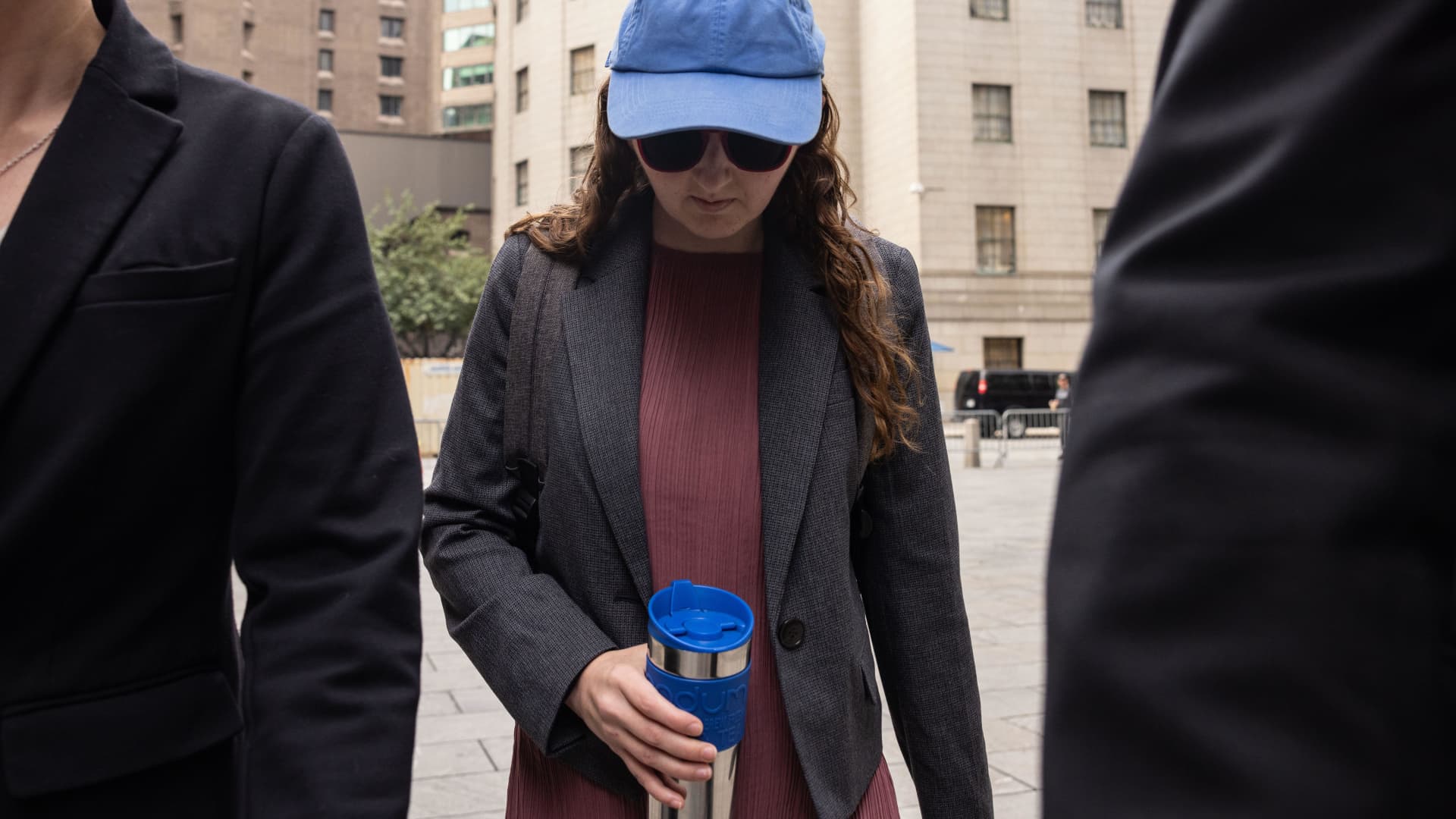
Caroline Ellison, former chief executive officer of Alameda Research LLC, center, arrives at court in New York, US, on Tuesday, Oct. 10, 2023.
Yuki Iwamura | Bloomberg | Getty Images
Caroline Ellison was the star witness in the criminal case against disgraced FTX founder Sam Bankman-Fried. On Tuesday, she will face her own sentencing.
Ellison’s role in the implosion of the crypto empire run by her former boss and ex-boyfriend Sam Bankman-Fried was to lie to investors, help steal billions of dollars from FTX customers, and subsequently re-purpose those funds toward bets and debts accrued at Alameda Research, the digital asset hedge fund she helmed as CEO.
Bankman-Fried and Ellison are both, in the eyes of the U.S. judicial system, guilty of the same crimes.
Two counts of wire fraud, two counts of conspiracy to commit wire fraud, one count of conspiracy to commit securities fraud, one count of conspiracy to commit commodities fraud, and one count of conspiracy to commit money laundering. Those charges carry a statutory maximum sentence of around 110 years, but there’s a sliding scale that takes into account the scope of the crimes and the criminal history of the defendant.
CNBC spoke to former federal prosecutors, trial attorneys and legal experts to get their take on what may be in store for Ellison at Tuesday’s hearing. They agree that Ellison is likely to walk away without any jail time at all.
After a jury of twelve unanimously found Bankman-Fried guilty of all seven criminal charges against him in November, he was sentenced in March to 25 years for his crypto fraud and ordered to pay $11 billion in forfeiture.
Unlike Bankman-Fried, Ellison agreed to a plea deal in December 2022. She pled guilty to all charges against her and spent two years cooperating with the government, regulators and the FTX bankruptcy estate.
Meanwhile, Bankman-Fried continues to deny virtually all criminal wrongdoing and is attempting to get his case retried.
Lawyers for Ellison and Bankman-Fried did not immediately respond to requests for comment.
Government exhibit in the case against former FTX CEO Sam Bankman-Fried.
Source: SDNY
No time behind bars
Cooperation with the prosecution in white collar crimes, even in what has been billed as “one of the biggest financial frauds in American history,” goes a long way.
Ellison was the most important of the several insiders who testified for the government, said former Assistant U.S. Attorney Kevin J. O’Brien, who specializes in white-collar criminal defense in New York.
“Because of the closeness of her relationship to Sam, she was able to provide a personal portrait of Bankman-Fried, an elusive character to be sure, that was probably unique in the government’s case,” O’Brien said.
The federal Probation Department has recommended “time served with three years of supervised release” as a credit to Ellison’s “extraordinary cooperation with the government” and “her otherwise unblemished record.”
While District Judge Lewis Kaplan is under no obligation to accept the Probation Department’s recommendation, O’Brien said that, along with some sort of fine, that would be “a fair sentence” because it reflects the “enormous value” of Ellison’s cooperation.
The U.S. legal system tends to favor reduced sentences for those who assist in bringing down higher targets, said Braden Perry, a former senior trial lawyer for the Commodity Futures Trading Commission.
At most, Perry estimates that Ellison, who is the third executive tied to Bankman-Fried’s enterprise to be sentenced, faces 18 months in prison and three years of supervised release.
Though Ellison was deeply involved in the fraudulent activities, “she did not have the same control or directorial authority as SBF, which will likely influence the judge’s decision about imposing a light sentence,” Perry said.

Encouragement to cooperate
More than likely, Ellison’s conviction will entail several years of supervised release and community service with a slew of attached activity restrictions, such as no trading in both crypto and non-crypto markets or foreign travel, said Yesha Yadav, law professor and Associate Dean at Vanderbilt University.
Unlike Bankman-Fried who has faced public admonition and been portrayed by the government as a recidivist character, Ellison has been praised repeatedly by prosecutors and by new FTX CEO and bankruptcy administrator John Ray III.
“On the stand, she came across as someone who felt guilt and pain at what she had done,” Yadav said.
SBF’s defense team asked for no more than 6.5 years of incarceration, but Kaplan said Ellison’s testimony ultimately proved pivotal to his decision to sentence Bankman-Fried to nearly four times that.
Kaplan also sided with federal prosecutors when he revoked Bankman-Fried’s bail and sent him back to jail for witness tampering after he leaked private diary entries written by Ellison. Kaplan described the leak by Bankman-Fried as one designed to “hurt” and “discredit” Ellison.
Ellison “suffered very public humiliation over the last two years, often with sexist overtones,” Yadav said.
Most judges don’t like sending people to jail who aren’t a threat to harm others in the future, said former federal prosecutor Paul Tuchmann.
“The chance of Ellison ever harming anyone through criminal conduct in the future again are very low,” Tuchmann said.
If Kaplan ends up foregoing jail time in Ellison’s sentence, that could bode well for former FTX engineering chief Nishad Singh and Gary Wang, the co-founder and chief technology officer of FTX. Singh and Wang will be sentenced Oct. 30 and Nov. 20, respectively.
“I do think that if he wants to, Judge Kaplan can ‘afford’ to give all of these people no prison time,” said Tuchmann, adding that “Most judges want to encourage people like that to cooperate, and a sentence of time served and probation is the best way to do that.”
WATCH: Sam Bankman-Fried’s family on sentencing: We are heartbroken and will continue to fight for our son

Technology
Logitech’s MX Creative Console is a Stream Deck for Photoshop and Premiere Pro
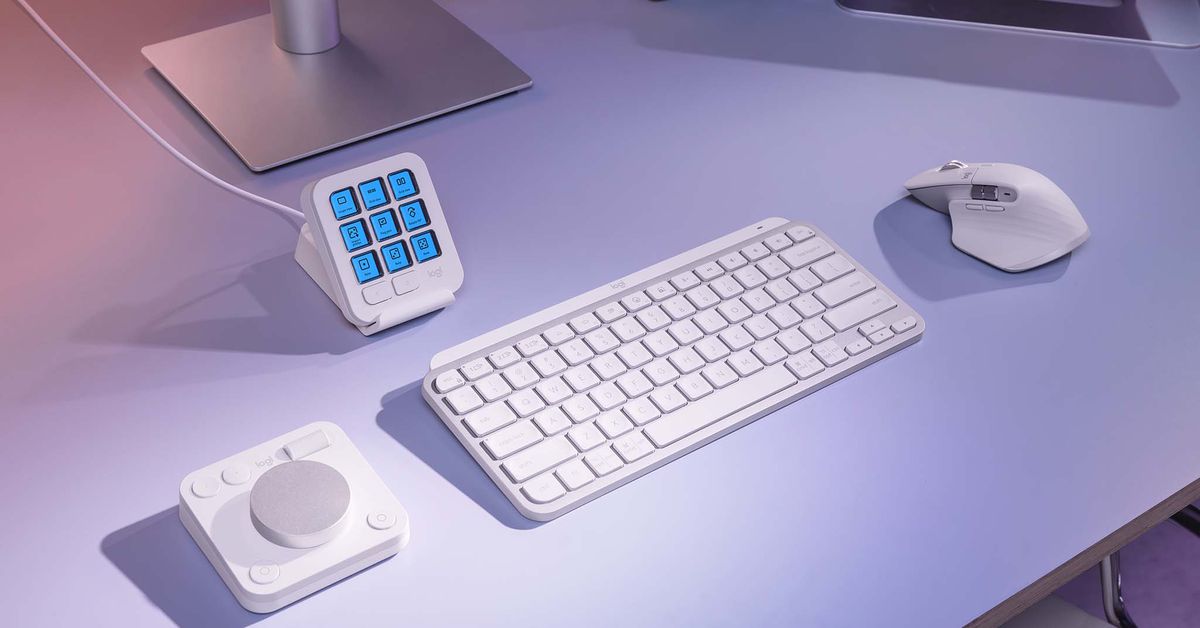
After acquiring Steam Deck rival Loupedeck last year, Logitech is launching a $199.99 MX Creative Console that’s designed to control Adobe Photoshop and Premiere Pro. The control panel includes a Stream Deck-like keypad and a dialpad that has an analog dial and plenty of buttons to speed up creative tasks.
Logitech has created custom plugins for Adobe apps like Photoshop, Lightroom Classic, Premiere Pro, After Effects, Audition, and Illustrator for its MX Creative Console. In Premiere Pro you can use the dial to scrub through a timeline, and there are four buttons around the dial to activate functions like undo.
There’s also a roller for navigation, allowing you to easily adjust the level of zoom on a Premiere Pro timeline for more precise edits. In Photoshop you can twist the main dial to adjust brush sizes, or zoom in and out using the roller.
The main keypad works much like a Stream Deck, with nine customizable LCD keys that can be used to launch apps or control different features inside apps like Photoshop or Premiere Pro. There are also two page buttons at the bottom so you can create 15 pages of keys for each app.
All of the controls are fully customizable through Logitech’s app, with presets you can drag and drop onto the buttons for each app. It helps automate repetitive tasks into a single button press that usually require a few clicks or memorizing numerous keyboard shortcuts.
While this type of hardware combination will certainly speed up creative tasks in apps, if you already have the muscle memory of knowing a variety of keyboard shortcuts then the Creative Console might be slightly less useful. The dialpad alone could make this $199.99 device worth it for some though, thanks to the dial and roller precision tools that are unlike controlling apps using a mouse or keyboard.
Logitech is launching the MX Creative Console in pale grey and graphite models, and it’s even bundling three months of Adobe’s Creative Cloud membership. The main keypad connects to a PC or Mac through USB-C, and the dialpad connects via Bluetooth or Logitech’s Bolt dongle (sold separately).
Technology
Screaming, yelling, and 30,000 complaint emails: a report lays bare what went wrong at Sonos
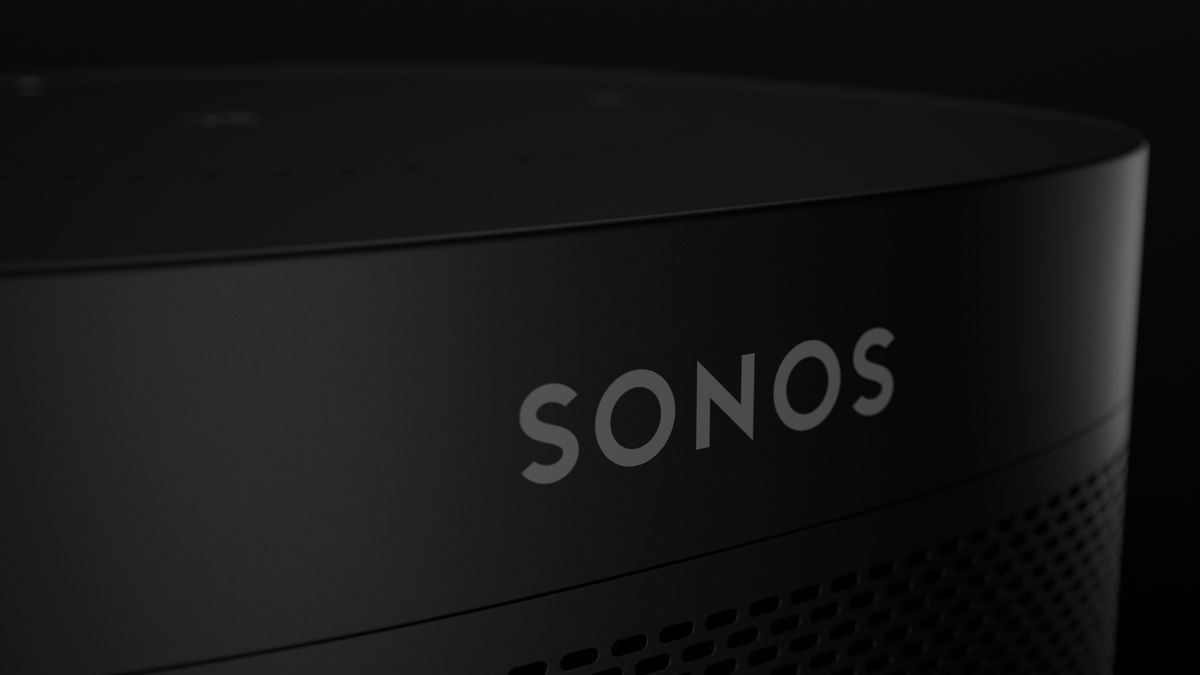
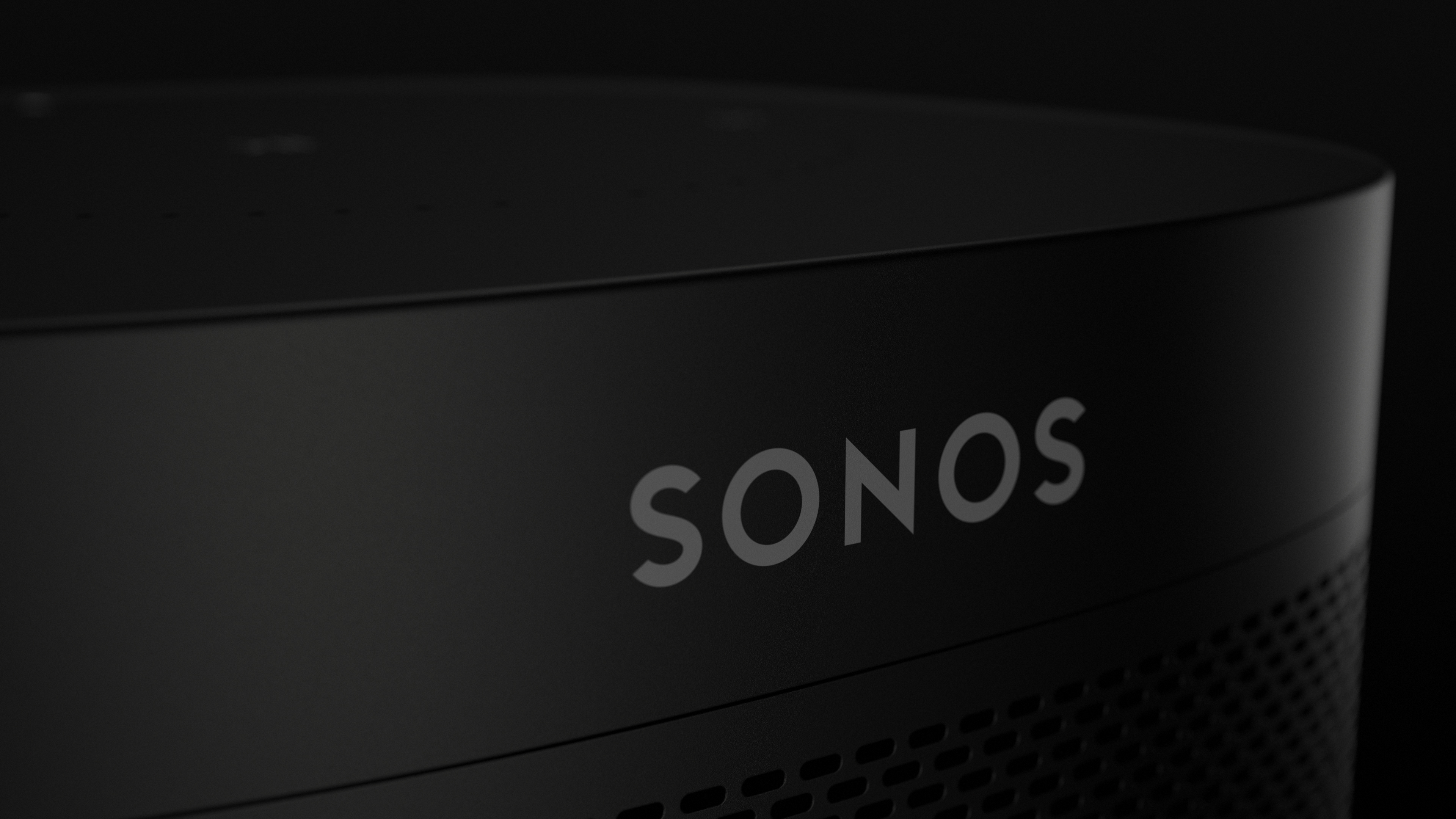
If you’ve been wondering how a company as successful as Sonos ended up recently not just shooting itself in the foot, but taking aim at each toe again and again and again, a new report in Bloomberg tells the whole story. And it’s like a movie, albeit a movie you’d watch from behind your fingers.
The report is by journalist Dave Lee, who’s been investigating an internal review carried out by Sonos’s lead counsel, Eddie Lazarus. Through multiple sources inside the company, he’s been able to get a pretty good idea of what that internal review discovered, and it revolves around something called “technical debt”, catalyzed with a dose of seeming mismanagement.
Technical debt is when you build on old code and infrastructure, even though it’s heading for obsolescence. According to Lee, Sonos did that for two decades. That meant that “the vast majority of work being performed for the new app was less about introducing new functionality than sorting out the existing mess.”
Sonos basically ignored that issue for years, people in the report claim, until the development of the new Sonos Ace headphones made it clear that the two new products that CEO Patrick Spence wanted to launch every year just couldn’t just run on old code. That meant rebuilding the app – and unfortunately that rebuilding would be happening during a time of accelerated product development schedules, a chaotic company reorganization, and many Sonos layoffs, including members of the firm’s quality assurance teams.
To stick with the movie analogy, this is the bit in Titanic where you see the iceberg.
What went wrong at Sonos
According to Lee, Sonos knew the app wouldn’t be ready on time: “Sonos employees, many of whom were fans before joining the company, started to directly and forcefully raise the alarm with Spence and other executives, according to three current and former employees. They described ‘yelling’ and ‘screaming’ in meetings.”
It seems that the fundamental problem with the app that Sonos released was that Sonos was too focused on attracting new customers and not focused enough on looking after the loyal owners of the best Sonos speakers it already had. Lee says that the company identified two kinds of bugs in the app prior to release; essential bugs that needed to be fixed before launch, and less critical bugs and feature omissions.
It seems that the list of essential bugs didn’t match what customers felt were essential, as acknowledged by Eddie Lazarus, lead counsel at Sonos who led an internal review of what happened: “Our list of essential bugs, obviously, was not comprehensive enough.”
CEO Patrick Spence’s mailbag, which used to get “a few dozen” emails a week, has received more than 30,000 customer complaints since the app launched in May.
As we’ve been reporting for many months now, Sonos is working hard to get its app right – but it’s suffered severe reputational damage and upset some big-spending customers who previously wouldn’t have looked twice at any of the other best wireless speakers.
We’ve already seen that the problems seem to have had a negative effect on Sonos Ace sales; Sonos will no doubt be hoping that the same doesn’t happen with its imminent Sonos Arc Ultra soundbar and Sonos Sub 4.
You might also like
Technology
Using an AI chatbot or voice assistant makes it harder to spot errors


Voice assistants provide information in a casual way
Edwin Tan/Getty Images
The conversational tone of an AI chatbot or voice-based assistant seems like a good way to learn about and understand new concepts, but they may actually make us more willing to believe inaccuracies, compared with information presented like a static Wikipedia article.
To investigate how the way we receive information can change how we perceive it, Sonja Utz at the University of Tübingen, Germany, and her colleagues asked about 1200 participants to engage with one of three formats.
Technology
How to test your SSD for potential problems
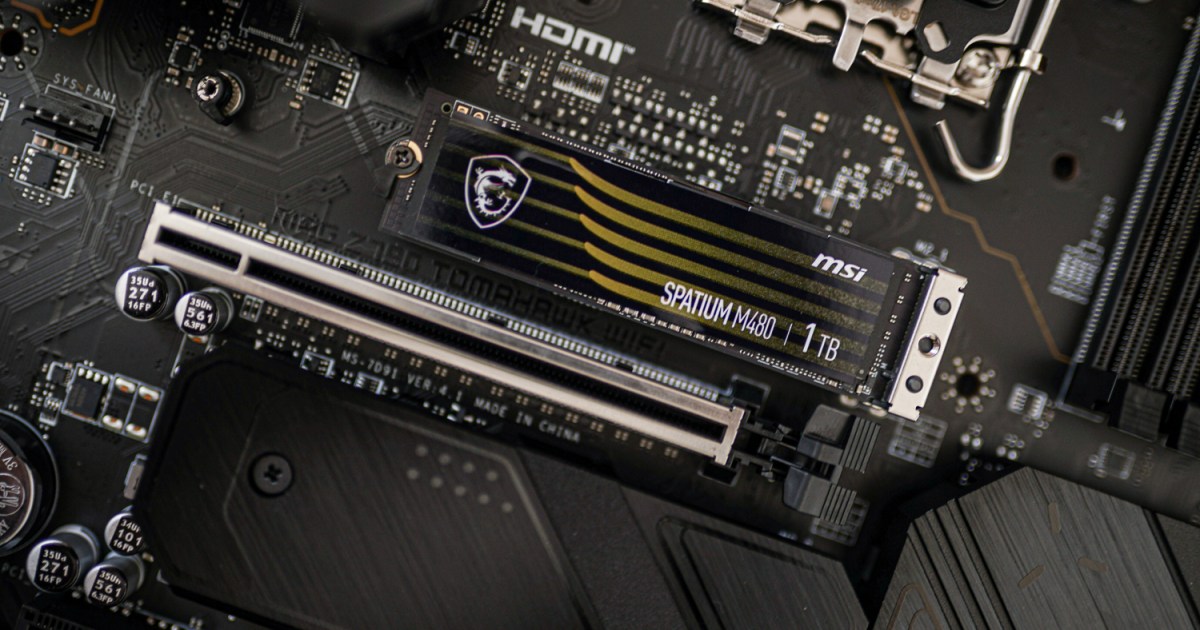
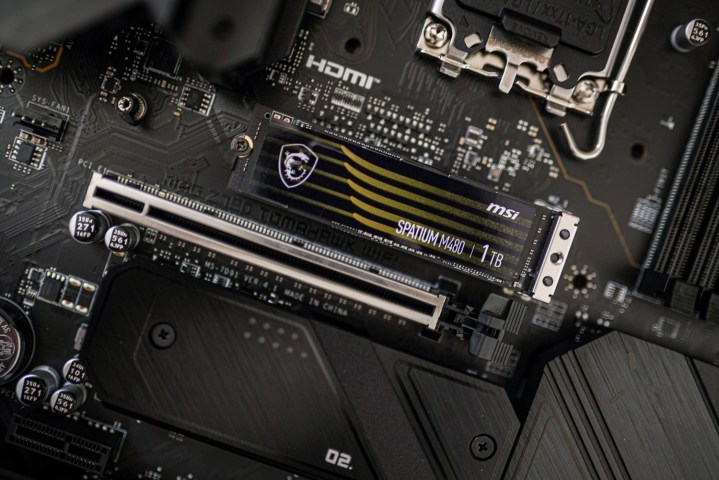
Jacob Roach / Digital Trends
Even if you own one of the best SSDs, it will fail one day, and that’s a fact.
Because of how SSDs work, each has a finite number of read and write cycles that it can complete before it dies, and every such cycle contributes to the degradation of NAND flash memory. At some point, it’ll be beyond saving. The good news? It’s nearly impossible to use up all of these read/write cycles. The bad news? Your SSD may still fail even if you’re far from hitting that limit.
Signs of a failing SSD include crashes, blue screens of death (BSOD), slow performance, data loss, and inability to write new files to the drive. When things are going south for your SSD, it’s important to know and act as soon as possible — you might still have time to back up your data. Check out the best ways to test your SSD to make sure your data is safe.
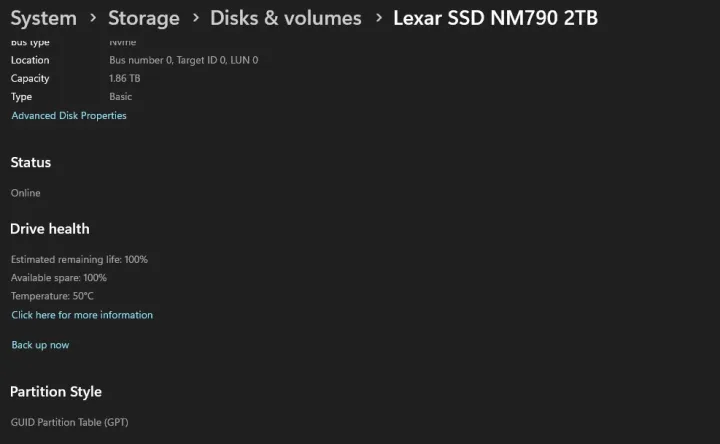
Monica J. White / Digital Trends
Check your SSD in Windows Settings
For a very basic check, you can just head straight to Windows Settings. Remember that this is not an in-depth test, so if you suspect your SSD might be failing, try out the other options on this list when you’re done with this one.
Step 1: Start by entering the Storage section of Windows Settings. You can do this by either pressing the Windows and I keys on your keyboard, then navigating to System > Storage, or by typing Storage into the Windows Search and selecting Storage Settings.
Step 2: Once you’re there, scroll down to find Advanced storage settings, then Disks & volumes.
Step 3: Pick your SSD from the list and click on Properties. Scroll down past some basic information about your SSD and look at Drive health. Windows will give you an estimate of your SSD’s remaining life, available space, and the temperature of your drive. Unfortunately, that’s all the information you can get from this utility.
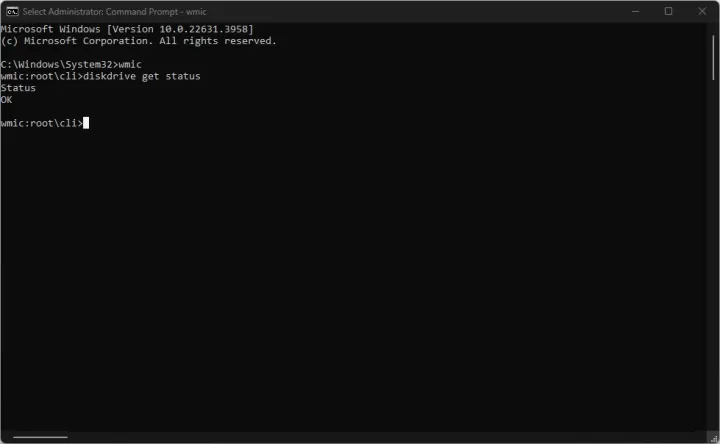
Monica J. White / Digital Trends
Use Windows Command Prompt
This is another simple “yes or no” type of test. Using the Command Prompt (CMD) in Windows, you can check whether your SSD is healthy. If it isn’t, that’s a big red flag that you should back up your data while you still can.
Step 1: Click on the Start Menu and type in Command Prompt. Then, right-click the result and select Run as administrator.
Step 2: Run the command as follows: wmic diskdrive get status and press Enter.
If the tool says that your SSD is “OK,” you’re in the clear. However, if you encounter “Pred Fail,” you should rush to back up your data (and then proceed with some more in-depth testing).

Monica J. White / Digital Trends
Use Windows PowerShell
Windows PowerShell can provide you with a bit more information than the Command Prompt can, and there are a couple of different commands you can run to learn more about your SSD.
Step 1: Start by launching Windows PowerShell. Enter the Start Menu and search for Windows PowerShell. Then, right-click it and Run as administrator.
Step 2: Once in PowerShell, you can try the following commands (you can just copy and paste them in):
- Get-PhysicalDisk — This will tell you the operational status of your SSD and whether it’s healthy or not.
- Get-PhysicalDisk | Get-StorageReliabilityCounter | Format-List — This drastically expands the amount of information you’ll get on your SSD. You’ll see the current and maximum temperatures, whether your SSD has encountered any read or write errors, or how long your SSD has been in use.
If the columns are empty, you may need to use a more advanced tool — more on that below.
You can also modify the second command: Get-PhysicalDisk | Get-StorageReliabilityCounter | Select [insert value here] and replace “[insert value here] with the specific information you might want to see. For example, to see write errors, use Get-PhysicalDisk | Get-StorageReliabilityCounter | Select WriteErrorsTotal.
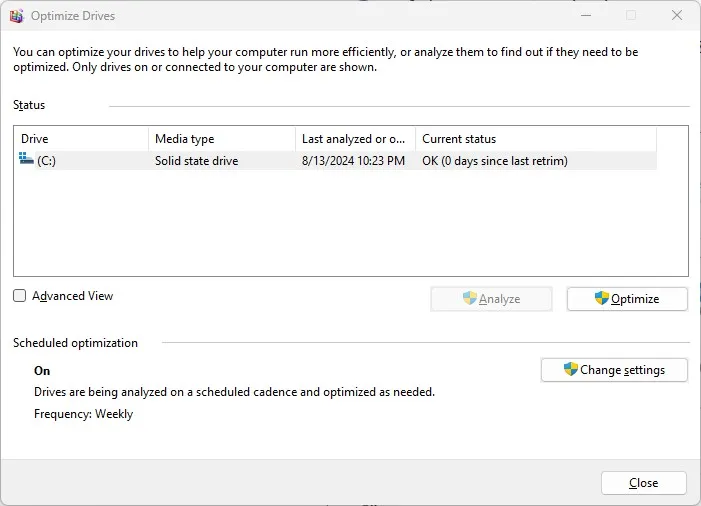
Monica J. White / Digital Trends
Use Optimize Drives in Windows
This is yet another option that will just tell you whether your SSD is healthy. However, you can also use the Defragment & Optimize Drive utility to optimize your SSD if there’s anything wrong with it.
Word of warning: Don’t bother defragmenting your SSD. Just use this tool to check your SSD health and optimize it.
Step 1: In the Start Menu, search for Defragment & Optimize Drive. Next, launch the tool.
Step 2: You’ll immediately be met with a list of all your drives. In the Current status column, you’ll be able to see whether your SSD is doing fine.
The utility will also tell you how long it’s been since the last “retrim.” This refers to a process that reclaims unused space on your drive by essentially telling your SSD which blocks of data aren’t needed anymore. No matter if your SSD is healthy or not, you can press Optimize to run a retrim. The tool performs retrims in the background, so if it’s been done recently, there’s no need to re-do it.

Monica J. White / Digital Trends
Use CrystalDiskInfo
When it comes to getting some more comprehensive information about SSD health, CrystalDiskInfo is the go-to tool. It’s free to use and easy to follow. It’ll give you all the most important data on your SSD, from its power-on count and power-on hours to whether it’s healthy.
Step 1: First, you need to download CrystalDiskInfo. Once the download finishes, install and run the tool.
Step 2: CrystalDiskInfo doesn’t have many hidden caveats that you need to keep in mind — what you see is what you get. It monitors your SSD health by checking SMART, which stands for Self-Monitoring, Analysis, and Reporting Technology. You’ll be able to tell at a glance whether your SSD is doing well.
Run the tool and check out the health of your drives. Some of the most important info to look at, apart from the percentage value under Health Status, includes Power On Count, Power On Hours, and Total Host Writes.

Monica J. White / Digital Trends
Use AIDA64 Extreme
AIDA64 Extreme is not a free tool, but you can use it for free for 30 days to test your PC. Unlike CrystalDiskInfo, AIDA64 can provide you with useful information on the rest of your PC, too, including your processor, motherboard, and RAM. Remember that if your SSD is fine but the rest of your PC may not be, we have a comprehensive troubleshooting guide to give you a hand.
Step 1: Start by downloading the AIDA64 Extreme tool directly from the manufacturer’s website. Pick the latest version available and download the trial. Go through the quick installation process and select Launch AIDA64 before it’s done.
Step 2: You’ll be met with a screen that lists a number of PC components and software on the left. To check SSD health, the one that you want to click on is Storage. Next, click on SMART to locate your SSD.
This is where you’ll get all the useful information about your SSD. The extent of data is similar to what you’ll find in CrystalDiskInfo because AIDA64 also reports the SMART data from your SSD. You’ll see SSD health, lifetime writes (written in a different format than in CrystalDiskInfo), and the total power-on time.

Monica J. White / Digital Trends
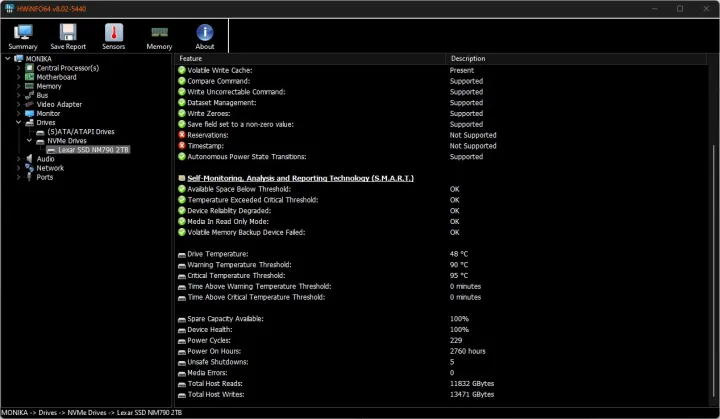
Monica J. White / Digital Trends
Use HWiNFO
HWiNFO is a useful tool for monitoring your PC’s health and performance. It has a separate utility for sensors, which can tell you all about your CPU and GPU temperatures and clock speeds, among other things. It also can provide you with quite a lot of information about your SSD.
Step 1: Begin by downloading HWiNFO from the official website. You can either choose the installer, which will create a persistent version of HWiNFO on your PC, or you can use the portable version that doesn’t require an installation.
Once downloaded, either install the program or launch it. Don’t tick any of the boxes (sensor only or summary only) — just press Start.
Step 2: You’ll see two windows pop up — the system summary and the main HWiNFO window. The summary gives you a brief overview of your system, and in the bottom-right corner of it, you’ll see a quick indicator about your SSD health. There’s much more to dig into, though.
Close or minimize the system summary window and tab into HWiNFO. On the left-hand side, click on the little arrow next to Drives. In the drop-down menu, select NVMe Drives and pick your SSD from the list.
Step 3: Click on your SSD and scroll through all the pertinent information. Like the other tools on this list, HWiNFO reports on device health, spare capacity, power cycles, and errors.
You can also click on Sensors at the top. There will be a bunch of other (interesting, but unrelated) sensors at first, so simply scroll down until you reach S.M.A.R.T. followed by your SSD model. This is where all the interesting metrics sit, such as real-time temperature and read/write totals.

Samsung
Use vendor-specific tools
Some storage manufacturers offer their own tools that you can use to scan your SSD with. Some of those are similar to the ones we’ve described above and don’t really provide anything extra, but there are a couple that let you run additional tests depending on the exact SSD model that you have.
Using these tools is fairly simple. You’ll usually just have to install them and browse through your SSD health. If there are extra tests to run, they’re visible at a glance.
Here are some tools to check out:
-
Seagate SeaTools — This tool also works with drives from other vendors. You can use it to run additional diagnostic tests.
-
Samsung Magician — This tool will only work if you have a Samsung SSD. It also includes features that can help you optimize your SSD’s performance.
-
Western Digital Dashboard — Similar to all the other tools, the WD Dashboard also lets you upgrade your firmware and check SSD health. Only works with WD and SanDisk SSDs.
-
Crucial Storage Executive — Made only for Crucial SSDs, this tool includes performance optimization and firmware updates.
-
Kingston SSD Manager — Provides SMART data and usage statistics, secure erase, and firmware updates for Kingston SSDs.
Of course, there is a chance that the tests reveal that the device is close to expiring. In this case, it’s probably time to look for a new SSD and make sure you know how to install an SSD in your PC.
Science & Environment
Hurricane John’s rapid intensification catches Mexico tourist hubs of Acapulco and Puerto Escondido off guard

Puerto Escondido, Mexico — Hurricane John struck Mexico’s southern Pacific coast with life-threatening flood potential after growing into a major hurricane in a matter of hours. It came ashore near the town of Punta Maldonado late Monday night as a Category 3 storm with maximum sustained winds of 120 mph. John’s rapid intensification forced authorities to rush to keep pace and warn people of its potential destruction.
“Seek higher ground, protect yourselves and do not forget that life is the most important thing; material things can be replaced. We are here,” Mexican President Andrés Manuel López Obrador wrote on the social media platform X.
By early Tuesday, John had weakened to a Category 2 hurricane with 100 mph maximum sustained winds, according to the U.S. National Hurricane Center. It was expected to batter Punta Maldonado and the nearby tourist hubs Acapulco and Puerto Escondido before being weakened over the high terrain inland.
The center said before landfall that “life-threatening” storm surges and flash floods were already ravaging the Pacific coast near Oaxaca.
Hurricane John shows growing threat of rapid intensification
The unexpected surge in strength caught scientists, authorities and residents of the area by surprise, something AccuWeather Senior Meteorologist Matt Benz and other experts have attributed to warmer oceans, which add fuel to the hurricanes.
As a result, surprise surges in hurricanes’ strength have become increasingly common, Benz said.
“These are storms that we haven’t really experienced before,” he said. “Rapid intensification has occurred more frequently in modern times as opposed to back in the historical record. So that’s telling us there’s something going on there.”
Rapid intensification is defined by meteorologists as an increase in the maximum sustained winds of a tropical cyclone of at least 30 knots (about 35 mph) over a 24 hour period, according to the U.S. National Hurricane Center.
Residents were tense in Oaxaca’s coastal cities as the forecast shifted and authorities responded.
Laura Velázquez, the federal coordinator of civil protection, told residents of Pacific coastal cities they should evacuate their homes and head to shelters in order to “protect theirs and their family’s lives.”
“It’s very important that all citizens in the coastal zone… take preventive measures,” Velázquez said.
Ana Aldai, a 33-year-old employee of a restaurant on the shores of the tourist hub Puerto Escondido, said businesses in the area began closing after authorities ordered the suspension of all work on the area’s main beaches.
The governments of Guerrero and Oaxaca states said classes would be suspended in a number of coastal zones on Tuesday.
Oaxaca’s governor said the state government had evacuated 3,000 people and set up 80 shelters. It also said it sent out 1,000 military and state personnel to address the emergency.
Videos on social media from Puerto Escondido showed flip-flop-clad tourists walking through heavy rain and fishermen pulling their boats out of the water. Strong rains in previous days have already left some roads in the region in a precarious position.
Aldai said she was “a little bit distressed” because notice from authorities came quickly. “There was no opportunity to make the necessary purchases. That also distresses us,” she said.
A lingering impact for a coast battered a year earlier by Otis
Benz, the meteorologist, expressed concern that the storm could slow once it hits land, leaving the storm hovering over the coastal zone, which could cause even greater damage.
The hurricane is bleak news for the region, which last year was walloped by Otis, a similar rapidly intensifying hurricane.
Otis devastated the resort city of Acapulco, where residents had little warning of the strength of what was about to hit them. One of the most rapidly intensifying hurricanes ever seen, scientists at the time said it was a product of changing climate conditions.
Otis blew out power in the city for days, left bodies scattered on the coast and desperate family members searching for lost loved ones. Much of the city was left in a state of lawlessness and thousands scavenged in stores, scrambled for food and water.
The government of López Obrador received harsh criticism for its slow response to Otis, but authorities have since pledged to pick up their speed.
President-elect Claudia Sheinbaum said her government planned to work on improving an early alert system, similar to what the country has with earthquakes.
Through Thursday, John is expected to produce 6 to 12 inches of rain across coastal areas of Chiapas state with more in isolated areas. In areas along and near the Oaxaca coast to southeast Guerrero, between 10 and 20 inches of rain with isolated higher totals can be expected through Thursday.
“You’re going to feel the impacts of the storm probably for the next couple of weeks to a couple of months,” meteorologist Benz added.
-

 Womens Workouts15 hours ago
Womens Workouts15 hours ago3 Day Full Body Women’s Dumbbell Only Workout
-

 News6 days ago
News6 days agoYou’re a Hypocrite, And So Am I
-

 Sport5 days ago
Sport5 days agoJoshua vs Dubois: Chris Eubank Jr says ‘AJ’ could beat Tyson Fury and any other heavyweight in the world
-

 Technology6 days ago
Technology6 days agoWould-be reality TV contestants ‘not looking real’
-

 News2 days ago
News2 days agoOur millionaire neighbour blocks us from using public footpath & screams at us in street.. it’s like living in a WARZONE – WordupNews
-

 Science & Environment6 days ago
Science & Environment6 days agoHow to unsnarl a tangle of threads, according to physics
-

 Science & Environment5 days ago
Science & Environment5 days ago‘Running of the bulls’ festival crowds move like charged particles
-

 CryptoCurrency5 days ago
CryptoCurrency5 days agoEthereum is a 'contrarian bet' into 2025, says Bitwise exec
-

 Science & Environment5 days ago
Science & Environment5 days agoLiquid crystals could improve quantum communication devices
-

 CryptoCurrency5 days ago
CryptoCurrency5 days agoDZ Bank partners with Boerse Stuttgart for crypto trading
-
Travel2 days ago
Where Retro Glamour Meets Modern Chic in Athens, Greece
-

 Science & Environment6 days ago
Science & Environment6 days agoWhy this is a golden age for life to thrive across the universe
-

 Science & Environment5 days ago
Science & Environment5 days agoQuantum ‘supersolid’ matter stirred using magnets
-

 Science & Environment5 days ago
Science & Environment5 days agoSunlight-trapping device can generate temperatures over 1000°C
-

 Health & fitness6 days ago
Health & fitness6 days agoThe secret to a six pack – and how to keep your washboard abs in 2022
-

 Science & Environment5 days ago
Science & Environment5 days agoHow to wrap your mind around the real multiverse
-

 CryptoCurrency5 days ago
CryptoCurrency5 days agoBitcoin miners steamrolled after electricity thefts, exchange ‘closure’ scam: Asia Express
-

 CryptoCurrency5 days ago
CryptoCurrency5 days agoCardano founder to meet Argentina president Javier Milei
-

 CryptoCurrency5 days ago
CryptoCurrency5 days agoDorsey’s ‘marketplace of algorithms’ could fix social media… so why hasn’t it?
-

 CryptoCurrency5 days ago
CryptoCurrency5 days agoLow users, sex predators kill Korean metaverses, 3AC sues Terra: Asia Express
-

 CryptoCurrency5 days ago
CryptoCurrency5 days agoBitcoin bulls target $64K BTC price hurdle as US stocks eye new record
-

 News5 days ago
News5 days agoIsrael strikes Lebanese targets as Hizbollah chief warns of ‘red lines’ crossed
-

 Sport5 days ago
Sport5 days agoUFC Edmonton fight card revealed, including Brandon Moreno vs. Amir Albazi headliner
-

 Science & Environment5 days ago
Science & Environment5 days agoHyperelastic gel is one of the stretchiest materials known to science
-

 Science & Environment5 days ago
Science & Environment5 days agoMaxwell’s demon charges quantum batteries inside of a quantum computer
-

 Science & Environment5 days ago
Science & Environment5 days agoQuantum forces used to automatically assemble tiny device
-

 News5 days ago
News5 days agoBrian Tyree Henry on voicing young Megatron, his love for villain roles
-

 Science & Environment6 days ago
Science & Environment6 days agoITER: Is the world’s biggest fusion experiment dead after new delay to 2035?
-

 Science & Environment5 days ago
Science & Environment5 days agoPhysicists are grappling with their own reproducibility crisis
-

 Science & Environment5 days ago
Science & Environment5 days agoNuclear fusion experiment overcomes two key operating hurdles
-

 CryptoCurrency5 days ago
CryptoCurrency5 days agoRedStone integrates first oracle price feeds on TON blockchain
-

 CryptoCurrency5 days ago
CryptoCurrency5 days agoSEC asks court for four months to produce documents for Coinbase
-

 CryptoCurrency5 days ago
CryptoCurrency5 days agoVitalik tells Ethereum L2s ‘Stage 1 or GTFO’ — Who makes the cut?
-

 CryptoCurrency5 days ago
CryptoCurrency5 days agoBlockdaemon mulls 2026 IPO: Report
-

 Womens Workouts3 days ago
Womens Workouts3 days agoBest Exercises if You Want to Build a Great Physique
-

 Womens Workouts3 days ago
Womens Workouts3 days agoEverything a Beginner Needs to Know About Squatting
-

 Science & Environment2 days ago
Science & Environment2 days agoMeet the world's first female male model | 7.30
-

 Technology5 days ago
Technology5 days agoiPhone 15 Pro Max Camera Review: Depth and Reach
-

 Science & Environment5 days ago
Science & Environment5 days agoHow one theory ties together everything we know about the universe
-

 Science & Environment6 days ago
Science & Environment6 days agoTime travel sci-fi novel is a rip-roaringly good thought experiment
-

 Science & Environment6 days ago
Science & Environment6 days agoLaser helps turn an electron into a coil of mass and charge
-

 Science & Environment5 days ago
Science & Environment5 days agoQuantum time travel: The experiment to ‘send a particle into the past’
-

 CryptoCurrency5 days ago
CryptoCurrency5 days ago2 auditors miss $27M Penpie flaw, Pythia’s ‘claim rewards’ bug: Crypto-Sec
-

 CryptoCurrency5 days ago
CryptoCurrency5 days agoJourneys: Robby Yung on Animoca’s Web3 investments, TON and the Mocaverse
-

 CryptoCurrency5 days ago
CryptoCurrency5 days ago$12.1M fraud suspect with ‘new face’ arrested, crypto scam boiler rooms busted: Asia Express
-

 Science & Environment5 days ago
Science & Environment5 days agoFuture of fusion: How the UK’s JET reactor paved the way for ITER
-

 CryptoCurrency5 days ago
CryptoCurrency5 days agoCertiK Ventures discloses $45M investment plan to boost Web3
-

 CryptoCurrency5 days ago
CryptoCurrency5 days agoVonMises bought 60 CryptoPunks in a month before the price spiked: NFT Collector
-

 CryptoCurrency5 days ago
CryptoCurrency5 days ago‘Silly’ to shade Ethereum, the ‘Microsoft of blockchains’ — Bitwise exec
-

 CryptoCurrency5 days ago
CryptoCurrency5 days ago‘No matter how bad it gets, there’s a lot going on with NFTs’: 24 Hours of Art, NFT Creator
-
Business5 days ago
How Labour donor’s largesse tarnished government’s squeaky clean image
-

 News5 days ago
News5 days agoBrian Tyree Henry on voicing young Megatron, his love for villain roles
-

 CryptoCurrency5 days ago
CryptoCurrency5 days agoCoinbase’s cbBTC surges to third-largest wrapped BTC token in just one week
-

 News3 days ago
News3 days agoBangladesh Holds the World Accountable to Secure Climate Justice
-

 News5 days ago
News5 days agoChurch same-sex split affecting bishop appointments
-

 Politics6 days ago
Politics6 days agoTrump says he will meet with Indian Prime Minister Narendra Modi next week
-

 Technology5 days ago
Technology5 days agoFivetran targets data security by adding Hybrid Deployment
-

 Money6 days ago
Money6 days agoWhat estate agents get up to in your home – and how they’re being caught
-

 Science & Environment5 days ago
Science & Environment5 days agoA new kind of experiment at the Large Hadron Collider could unravel quantum reality
-

 Politics5 days ago
Politics5 days agoLabour MP urges UK government to nationalise Grangemouth refinery
-

 News6 days ago
News6 days agoRoad rage suspects in custody after gunshots, drivers ramming vehicles near Boise
-

 CryptoCurrency5 days ago
CryptoCurrency5 days agoHelp! My parents are addicted to Pi Network crypto tapper
-

 CryptoCurrency5 days ago
CryptoCurrency5 days agoCrypto scammers orchestrate massive hack on X but barely made $8K
-

 Science & Environment5 days ago
Science & Environment5 days agoUK spurns European invitation to join ITER nuclear fusion project
-

 Science & Environment5 days ago
Science & Environment5 days agoWhy we need to invoke philosophy to judge bizarre concepts in science
-

 Science & Environment5 days ago
Science & Environment5 days agoHow do you recycle a nuclear fusion reactor? We’re about to find out
-

 CryptoCurrency5 days ago
CryptoCurrency5 days agoSEC sues ‘fake’ crypto exchanges in first action on pig butchering scams
-

 CryptoCurrency5 days ago
CryptoCurrency5 days agoElon Musk is worth 100K followers: Yat Siu, X Hall of Flame
-

 CryptoCurrency5 days ago
CryptoCurrency5 days agoBitcoin price hits $62.6K as Fed 'crisis' move sparks US stocks warning
-

 CryptoCurrency5 days ago
CryptoCurrency5 days agoCZ and Binance face new lawsuit, RFK Jr suspends campaign, and more: Hodler’s Digest Aug. 18 – 24
-

 CryptoCurrency5 days ago
CryptoCurrency5 days agoTelegram bot Banana Gun’s users drained of over $1.9M
-

 CryptoCurrency5 days ago
CryptoCurrency5 days agoEthereum falls to new 42-month low vs. Bitcoin — Bottom or more pain ahead?
-

 CryptoCurrency5 days ago
CryptoCurrency5 days agoETH falls 6% amid Trump assassination attempt, looming rate cuts, ‘FUD’ wave
-
Politics5 days ago
‘Appalling’ rows over Sue Gray must stop, senior ministers say | Sue Gray
-

 CryptoCurrency5 days ago
CryptoCurrency5 days agoBitcoin options markets reduce risk hedges — Are new range highs in sight?
-

 Money4 days ago
Money4 days agoBritain’s ultra-wealthy exit ahead of proposed non-dom tax changes
-

 Womens Workouts3 days ago
Womens Workouts3 days agoHow Heat Affects Your Body During Exercise
-

 Womens Workouts3 days ago
Womens Workouts3 days agoKeep Your Goals on Track This Season
-

 Womens Workouts3 days ago
Womens Workouts3 days agoWhich Squat Load Position is Right For You?
-

 News2 days ago
News2 days agoWhy Is Everyone Excited About These Smart Insoles?
-

 News2 days ago
News2 days agoFour dead & 18 injured in horror mass shooting with victims ‘caught in crossfire’ as cops hunt multiple gunmen
-

 Womens Workouts15 hours ago
Womens Workouts15 hours ago3 Day Full Body Toning Workout for Women
-

 News5 days ago
News5 days agoPolice chief says Daniel Greenwood 'used rank to pursue junior officer'
-

 Science & Environment6 days ago
Science & Environment6 days agoElon Musk’s SpaceX contracted to destroy retired space station
-

 Technology1 week ago
Technology1 week ago‘The dark web in your pocket’
-

 Business7 days ago
Business7 days agoGuardian in talks to sell world’s oldest Sunday paper
-
News5 days ago
Freed Between the Lines: Banned Books Week
-

 MMA5 days ago
MMA5 days agoUFC’s Cory Sandhagen says Deiveson Figueiredo turned down fight offer
-

 MMA5 days ago
MMA5 days agoDiego Lopes declines Movsar Evloev’s request to step in at UFC 307
-

 Science & Environment5 days ago
Science & Environment5 days agoHow to wrap your head around the most mind-bending theories of reality
-

 Technology6 days ago
Technology6 days agoCan technology fix the ‘broken’ concert ticketing system?
-

 Fashion Models5 days ago
Fashion Models5 days ago“Playmate of the Year” magazine covers of Playboy from 1971–1980
-

 News1 week ago
News1 week agoDid the Pandemic Break Our Brains?
-
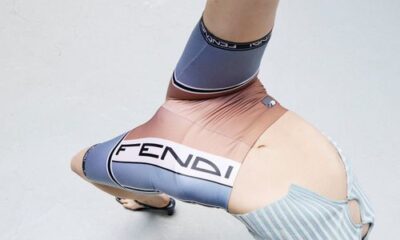
 Fashion Models5 days ago
Fashion Models5 days agoAchtung Magazine
-

 Fashion Models5 days ago
Fashion Models5 days agoNuméro Switzerland
-

 Politics7 days ago
Politics7 days agoTrump Media breached ARC Global share agreement, judge rules
-

 Fashion Models5 days ago
Fashion Models5 days agoMixte
-

 Science & Environment5 days ago
Science & Environment5 days agoHow Peter Higgs revealed the forces that hold the universe together
-

 News6 days ago
News6 days ago▶️ Media Bias: How They Spin Attack on Hezbollah and Ignore the Reality
-

 Science & Environment6 days ago
Science & Environment6 days agoTake a look behind the scenes at the world’s largest fusion experiment



You must be logged in to post a comment Login